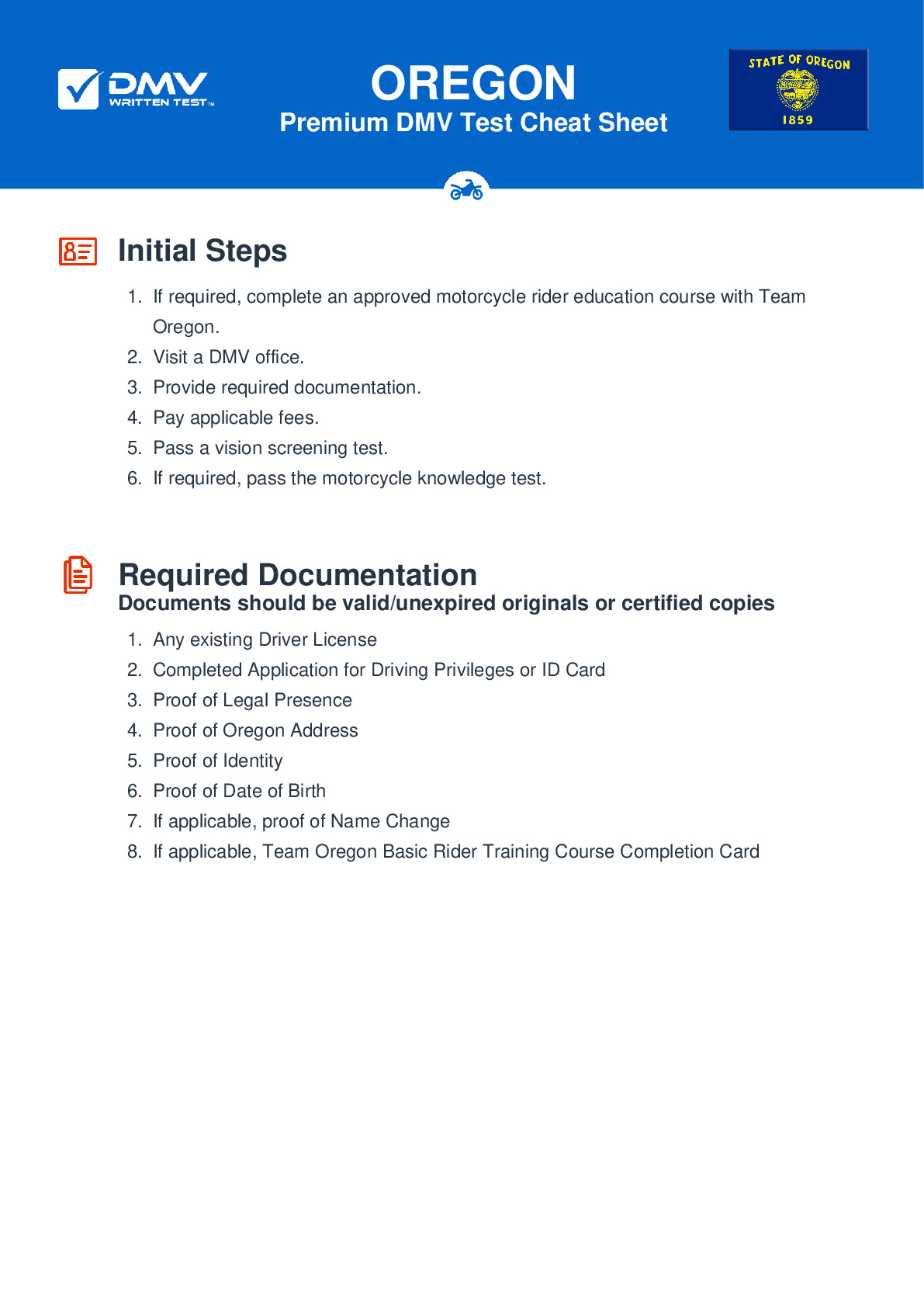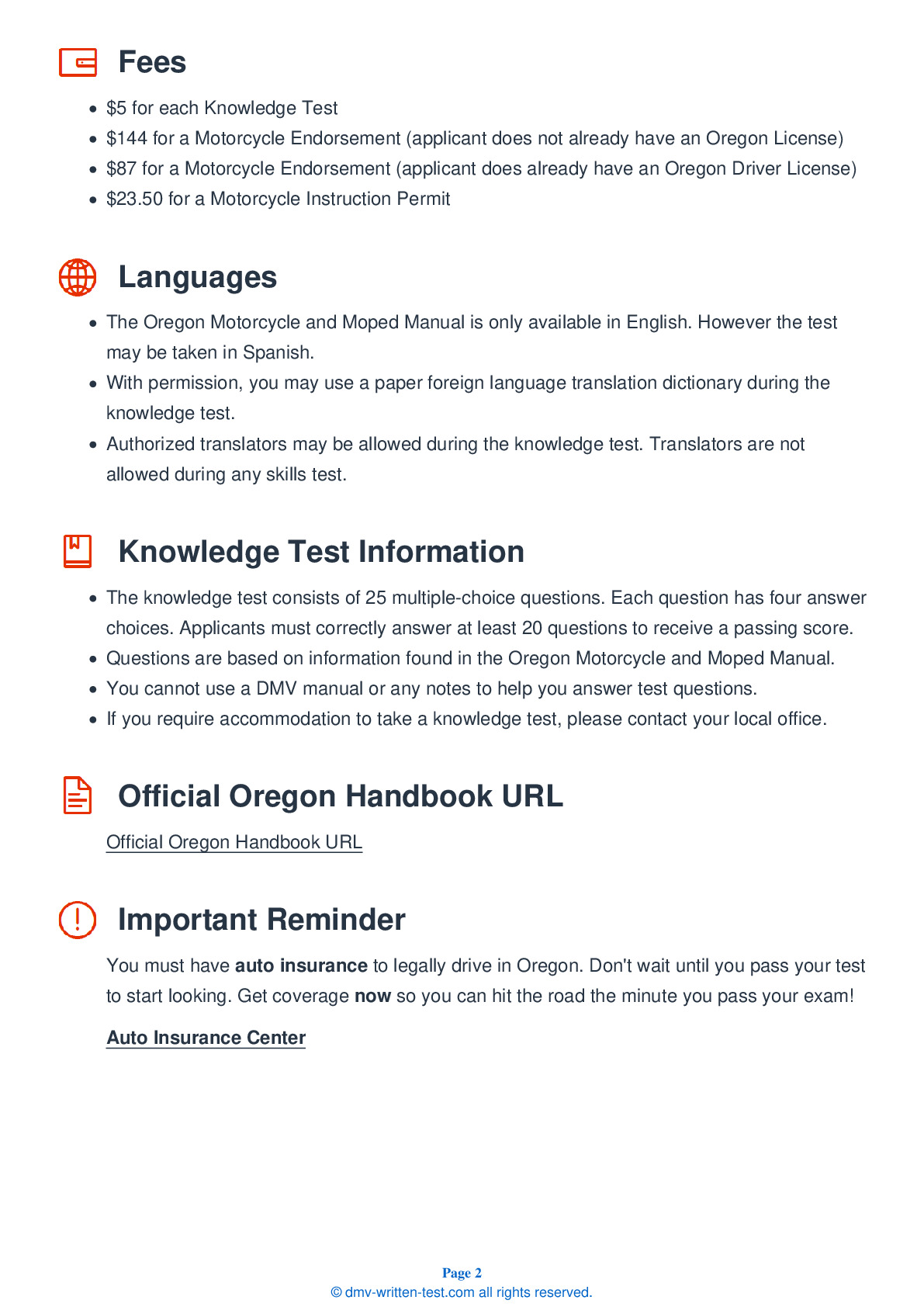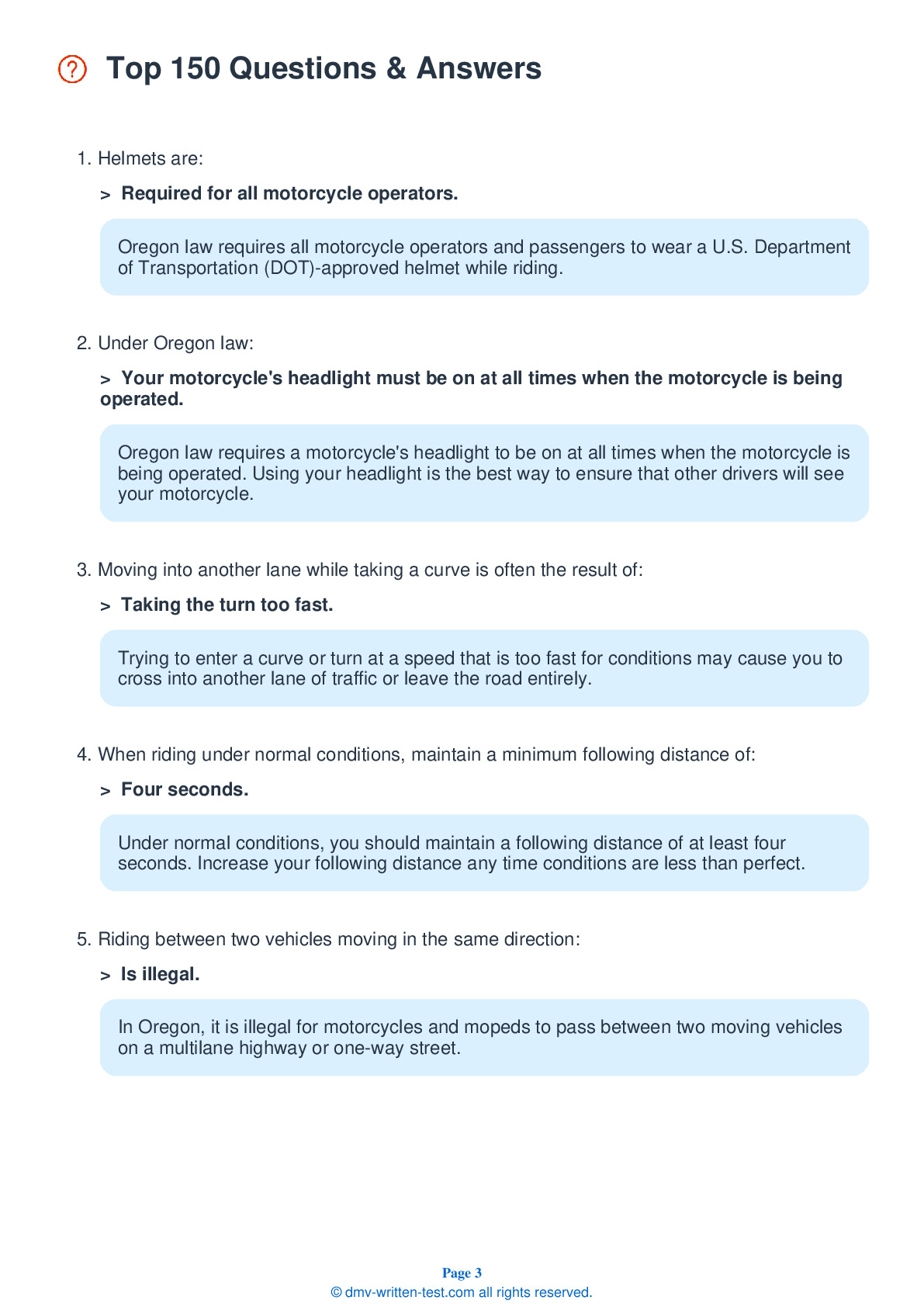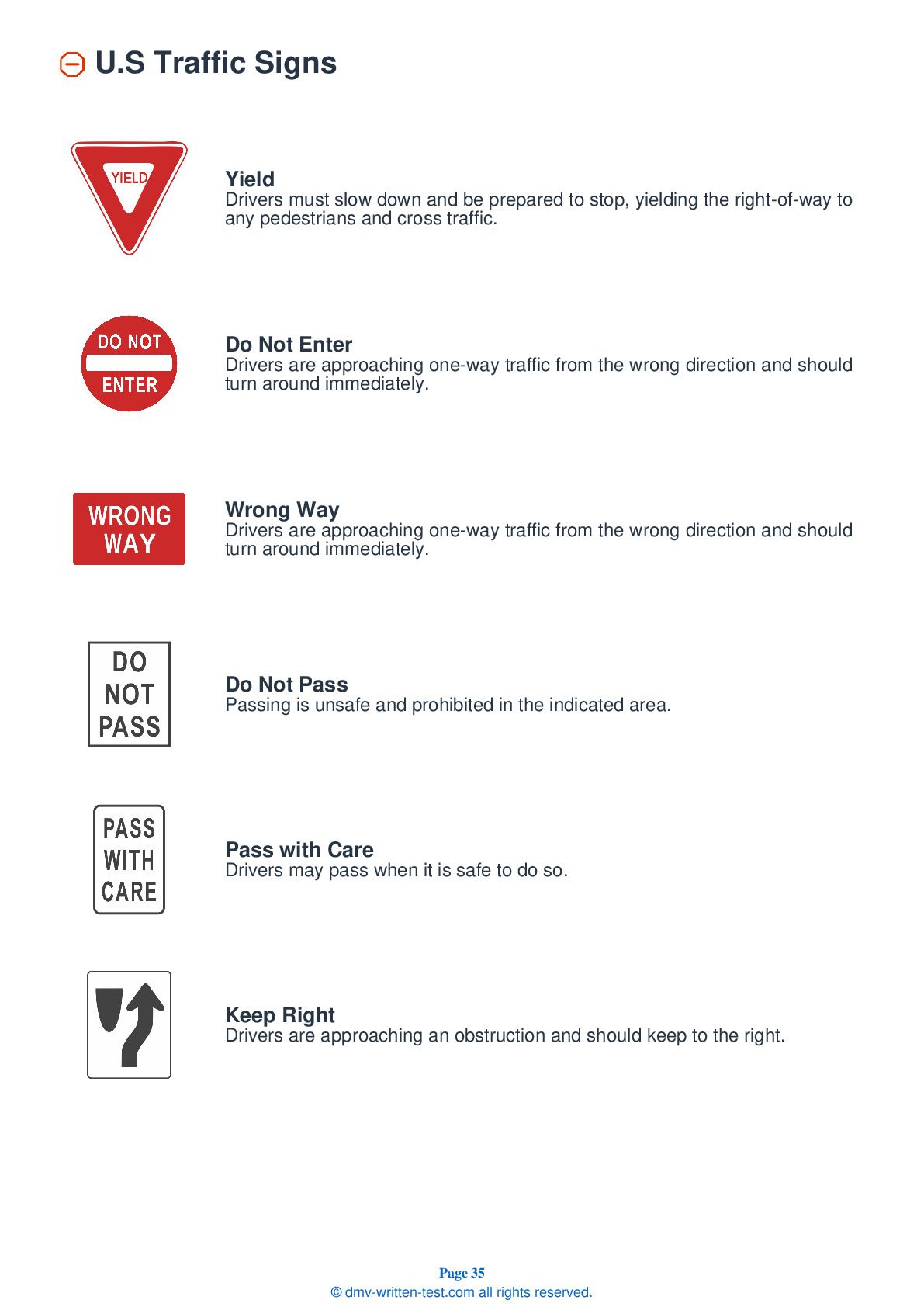2025 Oregon Motorcycle Permit Test 11
The following questions are from real DMV written motorcycle permit tests. These are some of the actual permit questions you will face in Oregon when getting your motorcycle learners permit. Each motorcycle theory practice test question has three answer choices. Select one answer for each question and select "grade this section." You can find this button at the bottom of the drivers license quiz. For a complete list of questions and answers for Oregon please visit https://cheat-sheets.dmv-written-test.com/en/oregon/motorcycle.
Number of Tests
Number of Question
Passing Score
1. Switching to a lower gear is also known as:
Explanation
Shifting to a lower gear causes an effect similar to using the brakes. For this reason, downshifting is also known as engine braking.
2. When riding at night, how should your following distance compare to your following distance during the day?
Explanation
Distances are difficult to judge in the dark because visual cues (like shadows and light contrasts) can be missing or distorted. You should allow a longer following distance when riding at night than you do when riding during the day.
3. Reflective clothing should:
Explanation
Brightly-colored and/or reflective clothing will increase your chances of being seen under any conditions. Remember that most motorcycle crashes happen in broad daylight so it is still best to wear bright clothing during the day.
4. In the context of group riding, what does the hand signal pictured mean?

Explanation
Hand signals are an important part of communication when riding in groups. If a lead rider extends their left arm straight down with their palm facing back, the group of riders should come to a stop.
5. An advantage to keeping a cushion of space between your motorcycle and other vehicles is that:
Explanation
Maintaining a cushion of space between your motorcycle and other vehicles on the road will give you a clearer view of any emerging hazards, more time to react to hazards, and more space to maneuver around them.
6. When entering a curve, a group should:
Explanation




